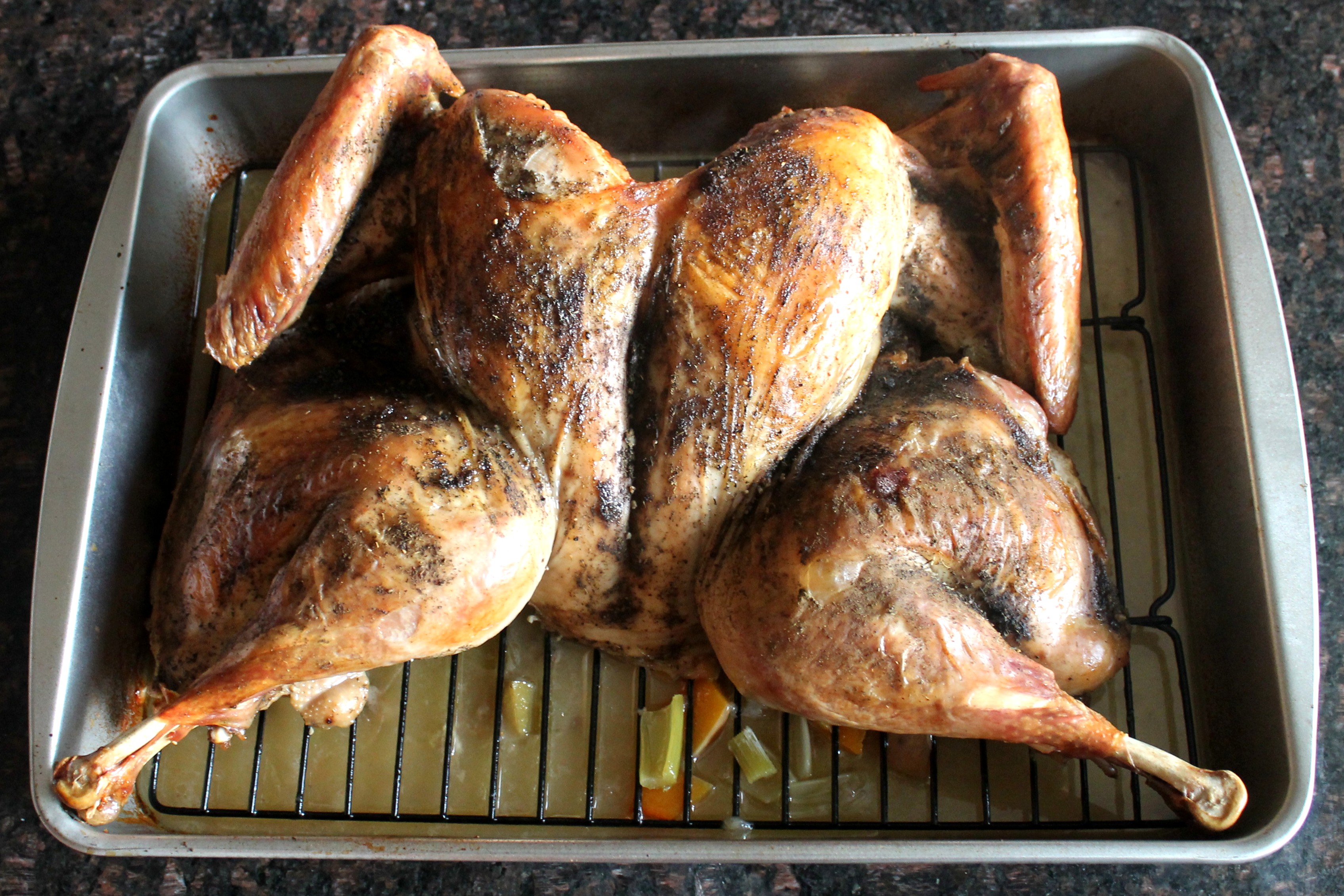 If you’ve been following our posts this month, they’ve all been leading up to the star of the show…The Turkey. Of all the methods for preparing this main course—wet brining, dry brining, stuffing and trussing, roasting upside down for the most succulent breast meat, even at one point roasting the whole bird inside a buttered paper bag (it works, but oy, what a mess to get onto the carving platter)—spatchcocking is by far our favorite, for so many reasons. Once you get past the name (it’s okay, we giggle a little every time we hear it, too), you’re looking at a nearly foolproof way of preparing a turkey. It’s actually highly effective for any type of poultry, but since we’re in the thick of turkey season, we’ll deal with other birds in later posts.
If you’ve been following our posts this month, they’ve all been leading up to the star of the show…The Turkey. Of all the methods for preparing this main course—wet brining, dry brining, stuffing and trussing, roasting upside down for the most succulent breast meat, even at one point roasting the whole bird inside a buttered paper bag (it works, but oy, what a mess to get onto the carving platter)—spatchcocking is by far our favorite, for so many reasons. Once you get past the name (it’s okay, we giggle a little every time we hear it, too), you’re looking at a nearly foolproof way of preparing a turkey. It’s actually highly effective for any type of poultry, but since we’re in the thick of turkey season, we’ll deal with other birds in later posts.
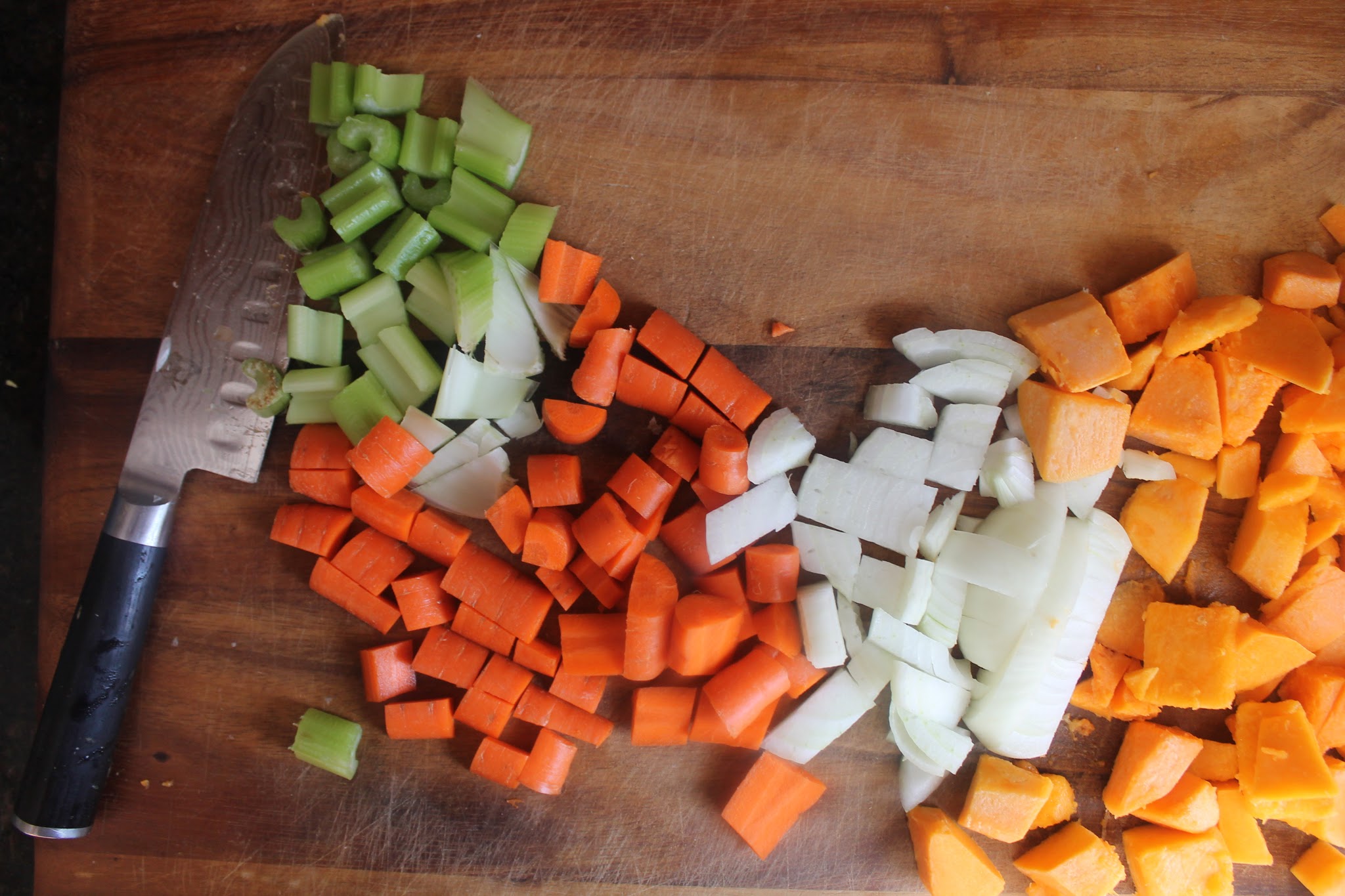 If you have an electric carving knife, this method will be super easy to tackle. Otherwise, you’ll need a strong, sharp pair of kitchen shears and a fair amount of grip strength, but it’s absolutely worth the effort. The technique involves removing the backbone of the turkey, turning it breast side up and giving it a good push on the breastbone to flatten it. It’s not for the faint of heart, but again, well worth the effort.
If you have an electric carving knife, this method will be super easy to tackle. Otherwise, you’ll need a strong, sharp pair of kitchen shears and a fair amount of grip strength, but it’s absolutely worth the effort. The technique involves removing the backbone of the turkey, turning it breast side up and giving it a good push on the breastbone to flatten it. It’s not for the faint of heart, but again, well worth the effort.
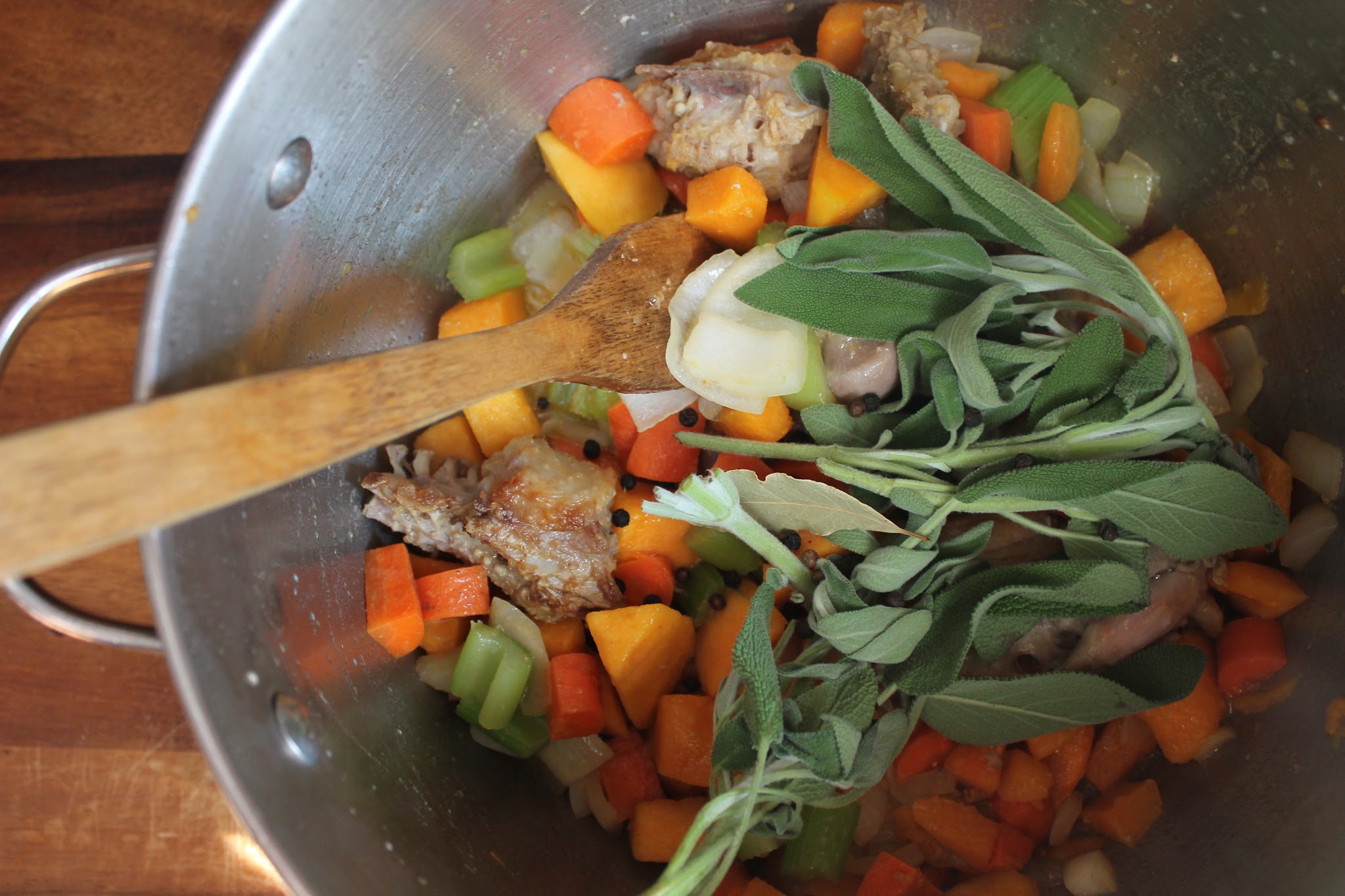 Perhaps the greatest advantage of spatchcocking is that the flattened bird cooks much faster and can handle a higher temperature, which along with the increased surface area gives you the greatest amount of crispy, golden skin. And not for nothing, the bed of vegetables on which you roast the turkey will be out-of-this-world delicious. They’re one of our favorite things about this method, the burned fingers and slapped hands that ensue notwithstanding. Also, the decreased cooking time frees up your oven for other fresh baked goodies on the big day. This recipe—adapted from our much-admired food science guru Alton Brown—calls for dry brining, and while he suggests that you dry-age the bird for three or four days to maximize flavor, crispiness and juiciness, we’ve found that you can get the turkey prepped, rubbed down with your spice blend and roasted all on the same day. You’ll get great—even sublime—results without having to sacrifice valuable fridge space leading up to your Thanksgiving Day cook-a-thon.
Perhaps the greatest advantage of spatchcocking is that the flattened bird cooks much faster and can handle a higher temperature, which along with the increased surface area gives you the greatest amount of crispy, golden skin. And not for nothing, the bed of vegetables on which you roast the turkey will be out-of-this-world delicious. They’re one of our favorite things about this method, the burned fingers and slapped hands that ensue notwithstanding. Also, the decreased cooking time frees up your oven for other fresh baked goodies on the big day. This recipe—adapted from our much-admired food science guru Alton Brown—calls for dry brining, and while he suggests that you dry-age the bird for three or four days to maximize flavor, crispiness and juiciness, we’ve found that you can get the turkey prepped, rubbed down with your spice blend and roasted all on the same day. You’ll get great—even sublime—results without having to sacrifice valuable fridge space leading up to your Thanksgiving Day cook-a-thon.
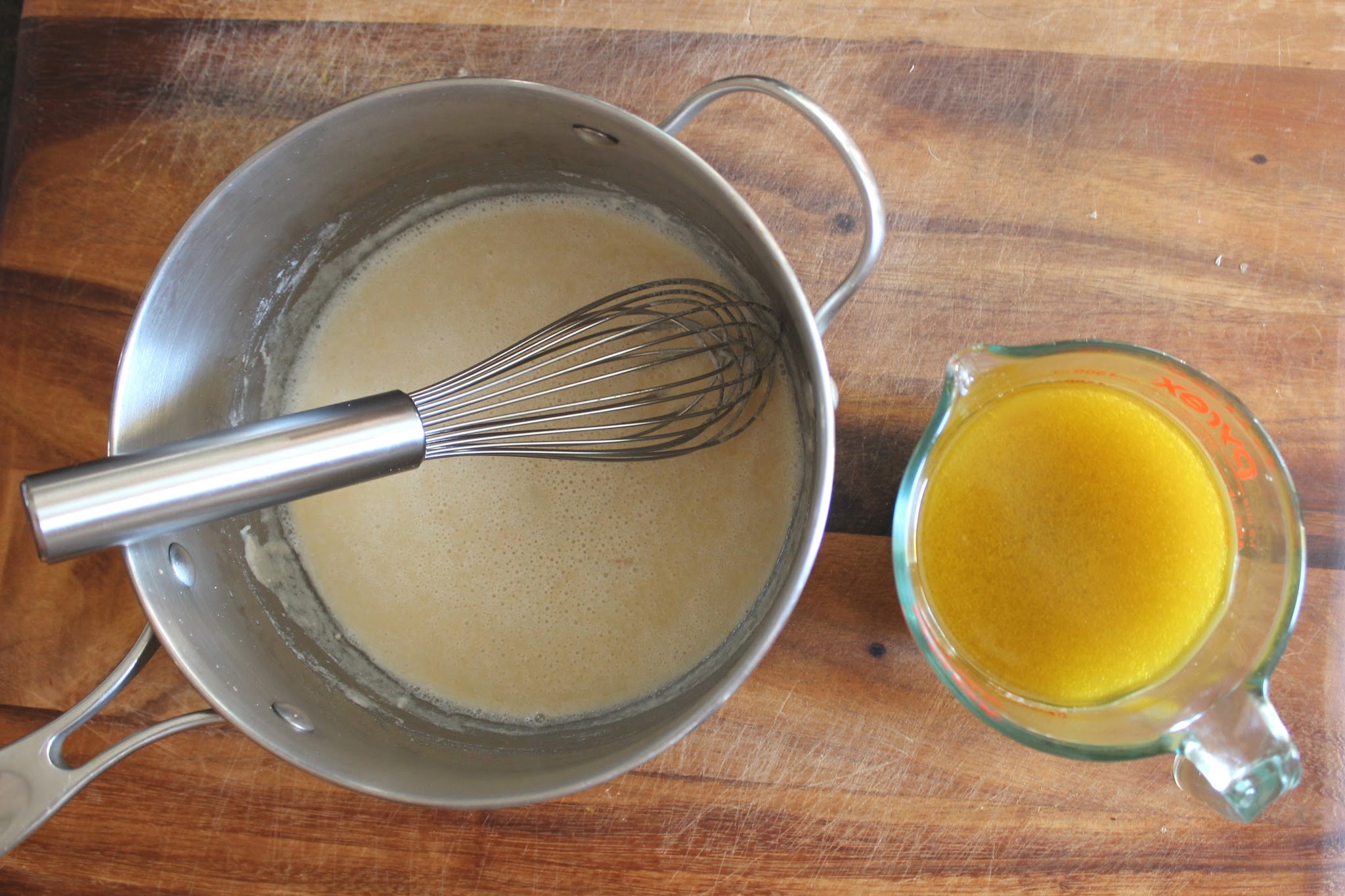 Our favorite schedule, though, is to do all of your preparation of the bird in the morning, the day before you roast it. That will give you the backbone, neck and giblets for making a fresh, flavor-rich turkey stock that can then be used for make-ahead stuffings, dressings, and perhaps most importantly, a really fantastic gluten free gravy. The addition of butternut squash and sage to the stock pot really deepens the autumnal notes of the finished product, which will take your gravy to a whole other level.
Our favorite schedule, though, is to do all of your preparation of the bird in the morning, the day before you roast it. That will give you the backbone, neck and giblets for making a fresh, flavor-rich turkey stock that can then be used for make-ahead stuffings, dressings, and perhaps most importantly, a really fantastic gluten free gravy. The addition of butternut squash and sage to the stock pot really deepens the autumnal notes of the finished product, which will take your gravy to a whole other level.
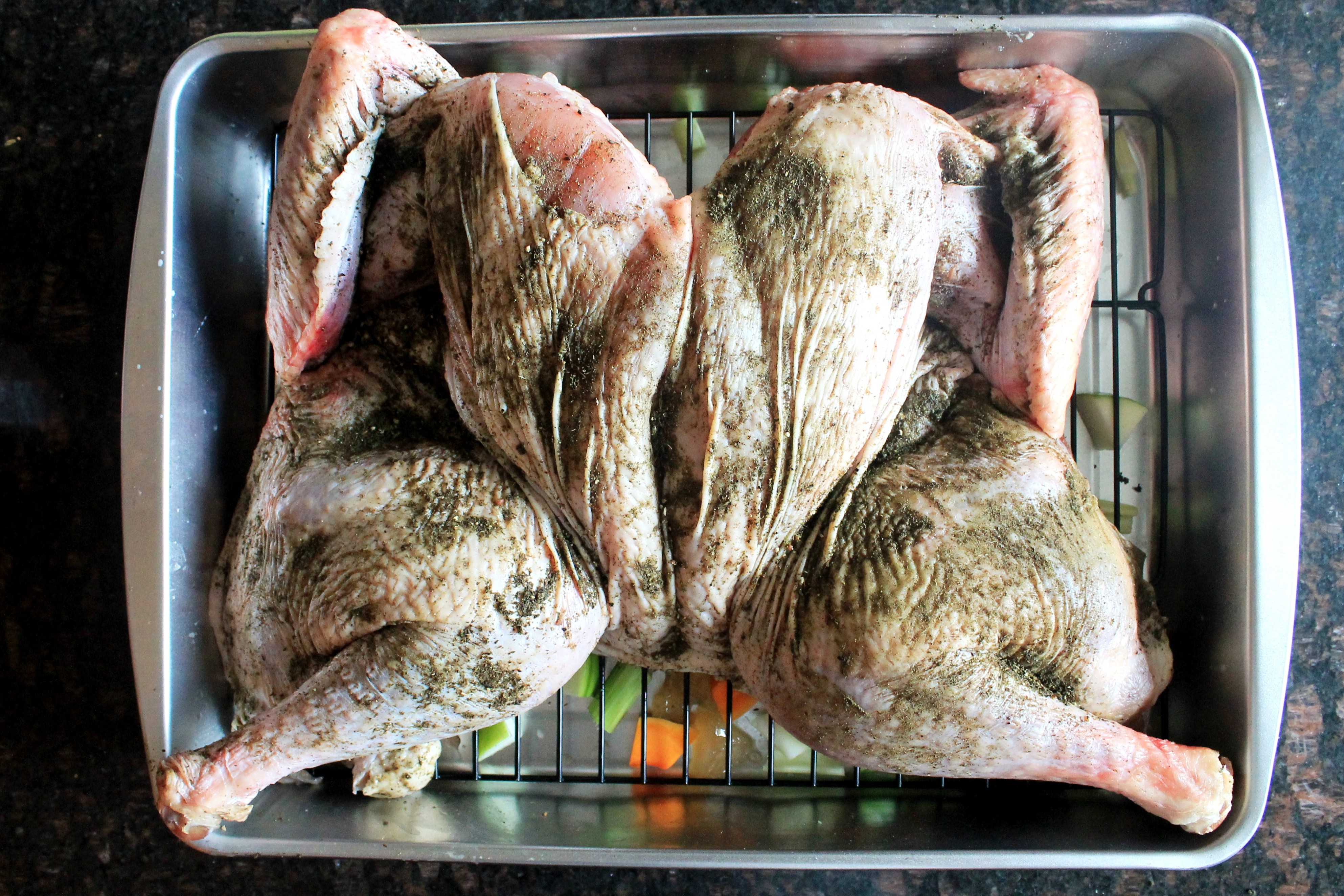
Serious Eats provides a tremendous resource for making gluten free gravies, but the simplest method is to use equal parts butter and sweet white rice flour for the roux, then add your fresh turkey stock, and salt and cracked pepper to taste. You won’t have to fuss with getting the gluten free flour blend just right and the resulting gravy will be lush, silky and a perfect complement to your perfectly cooked turkey.
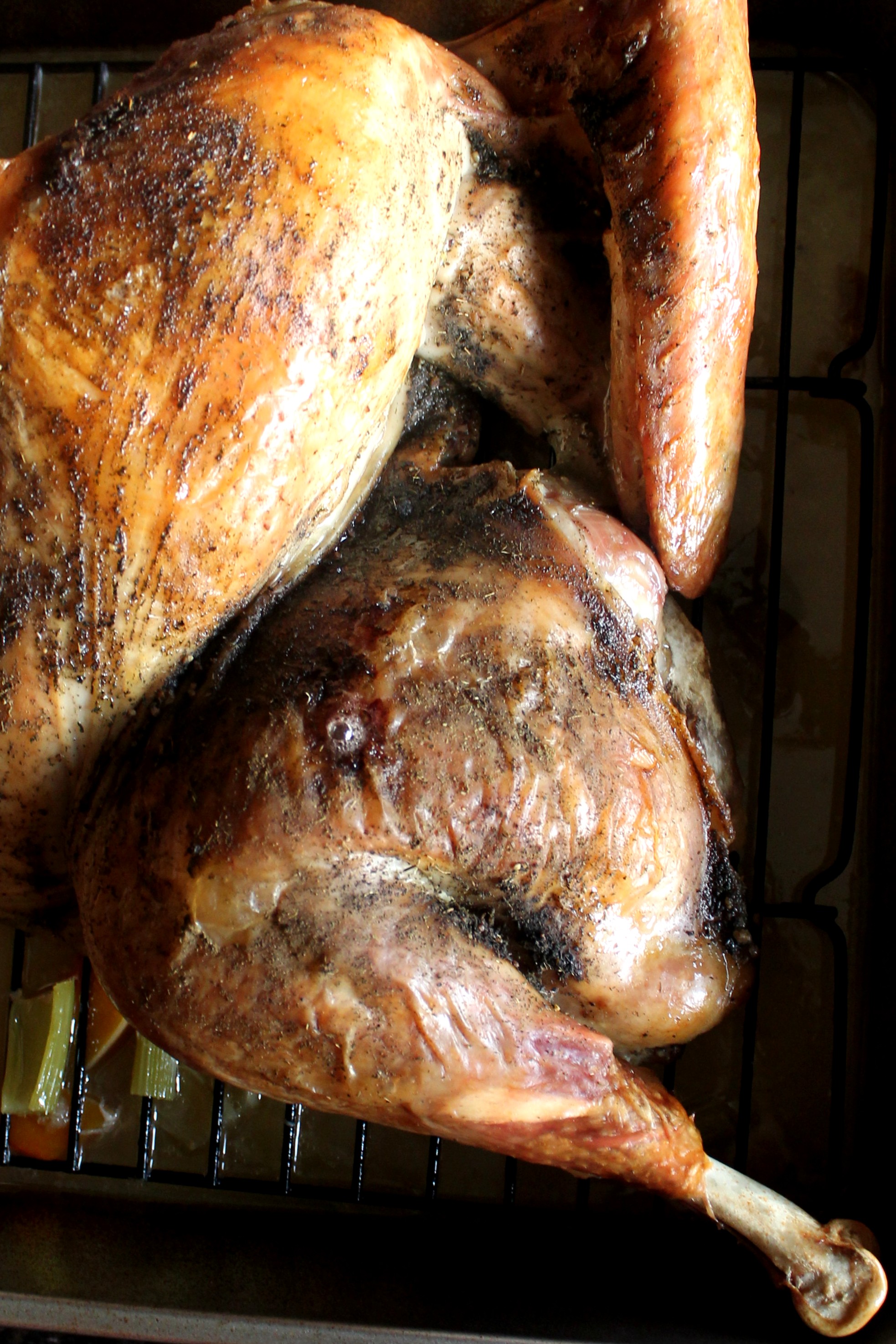
So there you have it. Our secret to a quicker, less stressful and all-around better Thanksgiving main course. Now go forth and spatchcock! *snicker*
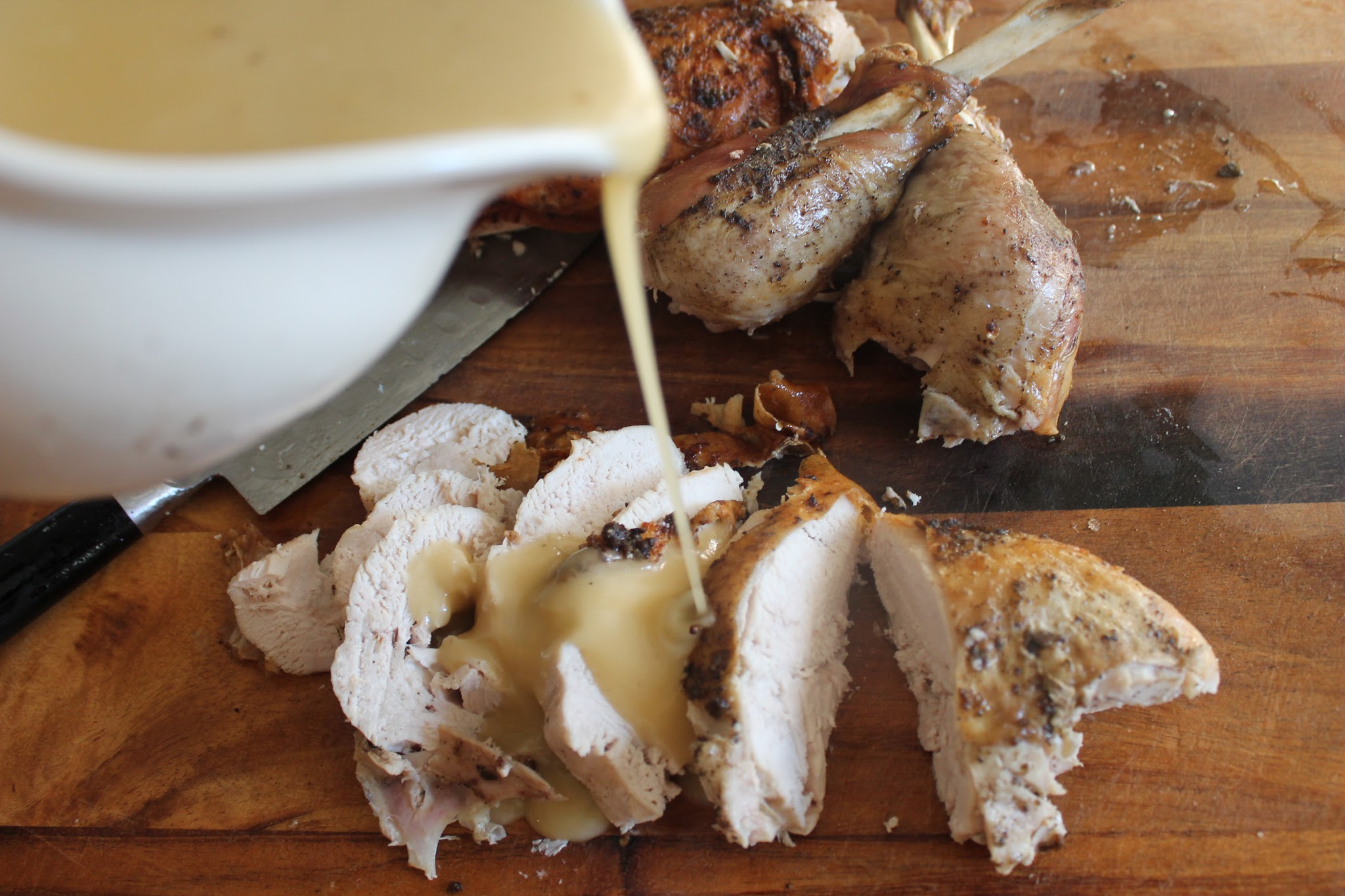
Adapted from Alton Brown, here and here.
- Spatchcocked Turkey:
- 3 tablespoons kosher salt
- 1½ teaspoons rubbed sage
- 1½ teaspoons dried thyme
- 1¼ teaspoons whole black peppercorns
- ½ teaspoon whole allspice berries
- 1 12 to 14 pound whole turkey, neck and giblets removed and reserved
- 1 medium onion, coarsely chopped
- 2 carrots, coarsely chopped
- 3- -4 celery stalks, coarsely chopped
- 2 tablespoons vegetable oil
- Turkey Stock:
- 1 tablespoon canola oil
- 1 turkey neck, reserved from turkey and cut in half
- 1 turkey backbone, reserved from turkey and cut in half
- 1 set giblets, reserved from turkey
- 1 small onion, coarsely chopped
- 2 medium carrots, coarsely chopped
- 2 stalks celery, coarsely chopped
- ½ medium butternut squash, peeled seeded and coarsely chopped (about 2 cups chopped)
- ¼ teaspoon kosher salt
- 6 cups water
- 2 handfuls fresh sage leaves
- 1 bay leaf
- 1 teaspoon whole black peppercorns
- Turkey Gravy:
- 3 tablespoons butter
- 3 tablespoons sweet white rice flour
- For the Turkey:
- Place the salt, sage, thyme, black peppercorns, and allspice into a spice grinder and pulse until the peppercorns and allspice are coarsely ground, 5 to 6 pulses. Set aside.
- Set the turkey, breast-side down, on a large cutting board with the tail closest to you. Use an electric knife or heavy-duty kitchen shears to cut up one side of the backbone. Turn the bird around and cut back down the other side of the spine. Reserve the backbone for Stock. Discard any fat pockets or excess skin found inside the turkey. Turn the turkey breast-side up and use the heel of your hands to press down on both breasts, until you hear a cracking sound and the bird has flattened slightly.
- Rub the seasoned salt on both sides of the turkey. Place the turkey on a parchment paper lined half sheet pan, breast-side up with legs running with the long side of the pan. Store, uncovered, in the refrigerator overnight.
- Remove the turkey from the refrigerator and leave at room temperature for 1 hour.
- Heat the oven to 450 degrees F.
- Place the onion, carrots, and celery stalks in a roasting pan and drizzle with vegetable oil. Place the turkey in the pan directly on top of the vegetables. Roast for 30 minutes.
- Reduce the heat to 400 degrees F. Continue to roast the turkey until a probe thermometer inserted into the thickest part of the breast registers 155 degrees F, an additional 40 to 50 minutes.
- Remove the turkey from the oven onto a cooling rack set inside a half sheet pan and rest for 30 minutes before carving.
- For the stock:
- Heat the oil in a 6½-quart stockpot over medium heat until it shimmers. Add the neck and backbone and saute 5 to 6 minutes or until browned. Add the giblets, onion, carrot, celery, butternut squash and kosher salt. Cook, stirring occasionally, until vegetables are softened, 4 to 5 minutes. Pour in the water and bay leaf and black peppercorns.
- Bring to a simmer over medium-high heat. Reduce heat to low and simmer for 1½ hours or until the stock reduces to 3 cups.
- Strain the stock through a fine mesh strainer and cool slightly.
- For the gravy:
- In a medium saucepan, melt the butter over medium heat. Add sweet white rice flour and whisk to combine.
- Cook over medium heat, stirring constantly, until roux turns golden brown, about 4 to 5 minutes. Whisk in 2 cups warm turkey stock, and cook until thickened, about 2 to 3 minutes. Season with salt and pepper and serve.
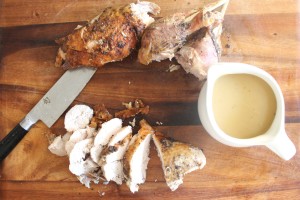
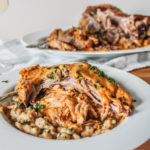
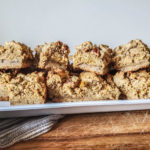

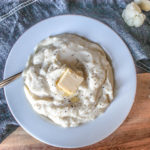


Leave a Reply